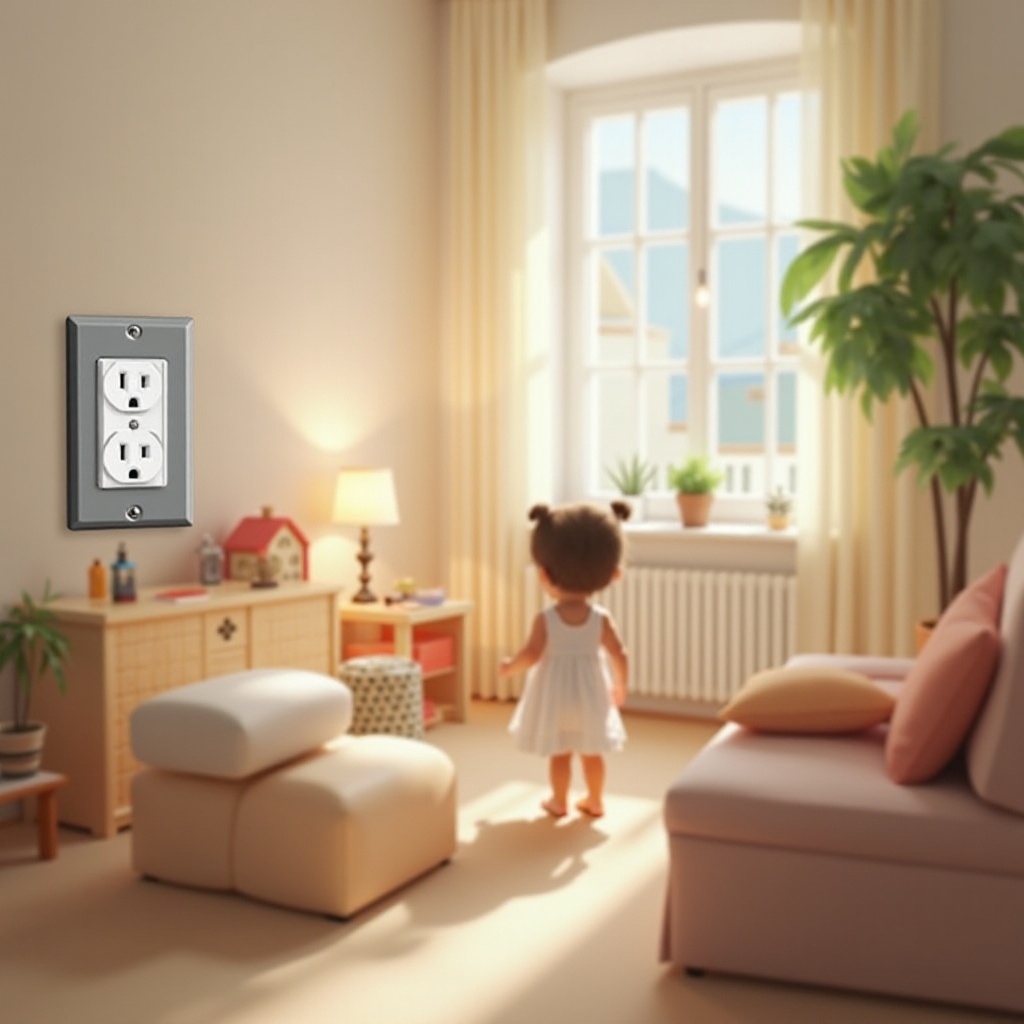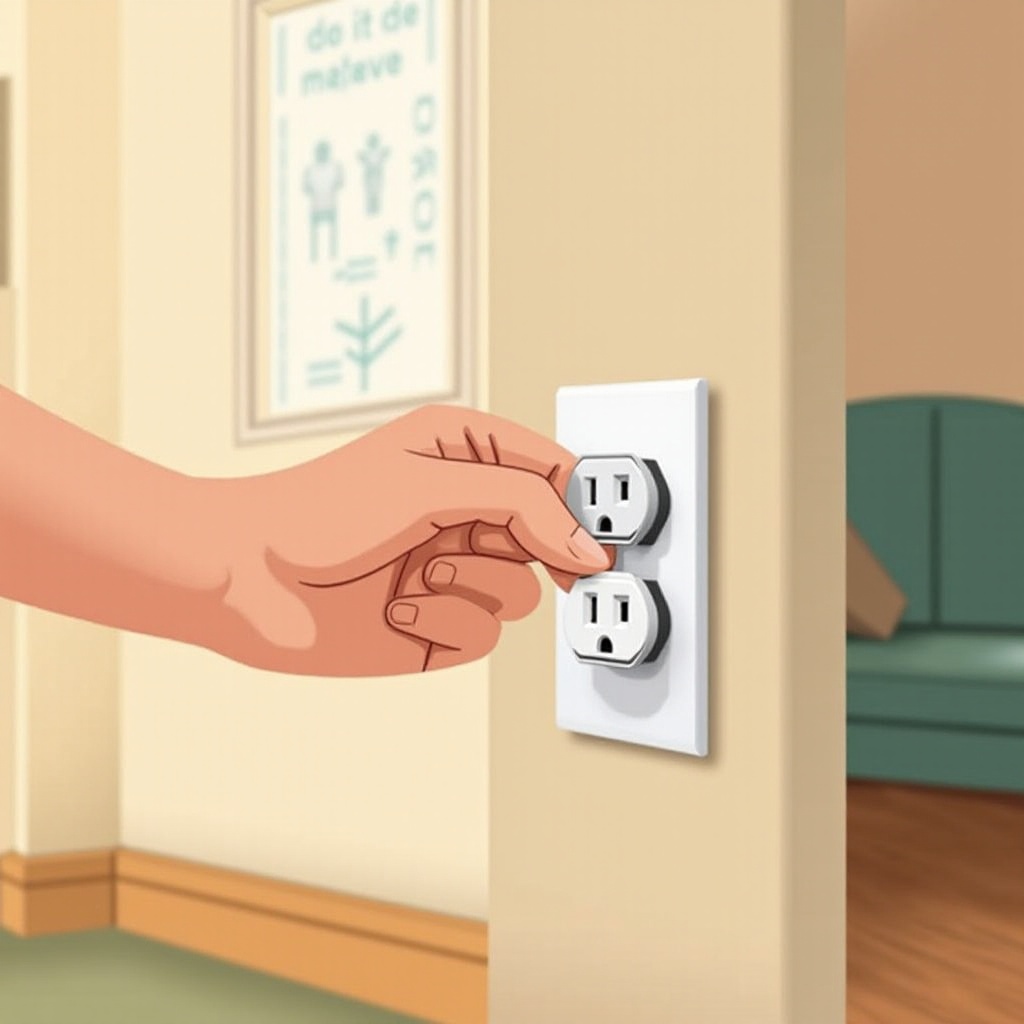Introduction
Keeping our children safe from harm, especially at home, is crucial for any parent. As toddlers grow curious, they explore their environments without understanding potential dangers. Electrical outlets, located conveniently at their height, pose significant risks. Childproofing these outlets prevents serious injuries and offers valuable peace of mind. This comprehensive guide will help you grasp the risks involved, choose the appropriate childproofing methods, and install them effectively.

Understanding the Risks of Unprotected Electrical Outlets
Electrical systems provide immense convenience but are intrinsically dangerous, especially for inquisitive children. Outlets attract youngsters due to their accessibility and visibility. However, inserting objects or fingers can result in electric shocks, burns, or severe injury, making childproofing vital.
Exposed outlets also pose secondary risks, such as short circuits and potential fires stemming from tampering. Recognizing these hazards underscores the importance of incorporating childproofing into your home safety strategies.
Types of Childproofing Solutions for Electrical Outlets
Protecting your children involves selecting the right outlet protection method tailored to your home and needs.
- Outlet Covers and Plugs: Basic plastic inserts that serve as barriers to prevent small fingers or foreign objects from accessing metal prongs.
- Outlet Plates with Sliding Covers: These plates replace conventional covers with a sliding mechanism, allowing adults easy access while maintaining safety when idle.
- Self-Closing Outlet Covers: Featuring automatic closure, these covers secure the outlets when the plug is removed, combining ease and safety for frequently accessed outlets.
Selecting the correct solution is the initial step; proper installation ensures maximum protection throughout your home.
Step-by-Step Installation Guide for Outlet Covers
Installing outlet protection devices may seem complex, but with simple tools and guidance, the process becomes straightforward.
- Selecting the Right Childproofing Product: Prioritize durability, user-friendliness, and compatibility with your home’s electrical setup.
- Tools Required for Installation: Typically, installations require a screwdriver, though some covers may need a drill for enhanced security.
- Installation Instructions:
- For outlet covers and plugs, fit the cover snugly into unused outlets.
- For sliding cover plates, unscrew the current plate and replace it with the secure sliding variant.
- For self-closing covers, align the cover over the outlet and secure using screws or adhesive as per the package instructions.
Following these steps secures your outlets, but combining them with additional strategies offers further safety layers.
DIY Childproofing Tips for Extra Safety
Commercial solutions are invaluable, yet extra DIY tips can supplement protection or provide temporary measures.
- Temporary Fixes Using Household Items: Consider duct tape as a short-term workaround, ensuring it’s replaced regularly for effectiveness.
- Creative Customization for Enhanced Safety: Arranging furniture strategically to obstruct access offers a practical solution—ensure stability to prevent furniture accidents.
Utilizing these tips provides flexibility, whether temporarily or in addition to permanent solutions.

Additional Safety Considerations
Childproofing should extend beyond initial installation, incorporating ongoing vigilance and child education.
- Educating Your Children on Electrical Safety: Teach simple safety rules using engaging mediums like books or videos at an age-appropriate level.
- Regular Safety Checks and Maintenance: Conduct monthly inspections to confirm covers remain secure and replace any damaged units swiftly.
Integrating these practices ensures a consistently safe environment around outlets and other potential hazards.
Conclusion
Safeguarding your child from potential electrical injuries is paramount, achieved through comprehensive childproofing methods. Understanding risks, selecting robust products, accurately following installation steps, and continuing vigilant practices create a foundation of safety. Regular updates to your security measures enhance protection, fostering a secure home for your child’s exploration.
Frequently Asked Questions
What is the most effective way to childproof electrical outlets?
The most effective approach uses secure outlet covers, such as self-closing outlet covers, along with teaching children about electrical safety.
Are there any temporary solutions for childproofing outlets?
Yes, using duct tape securely or arranging furniture to obstruct access can temporarily protect outlets.
How often should I check my childproofing measures?
Conduct monthly checks to ensure all outlet covers are intact and securely in place, replacing them when necessary.
